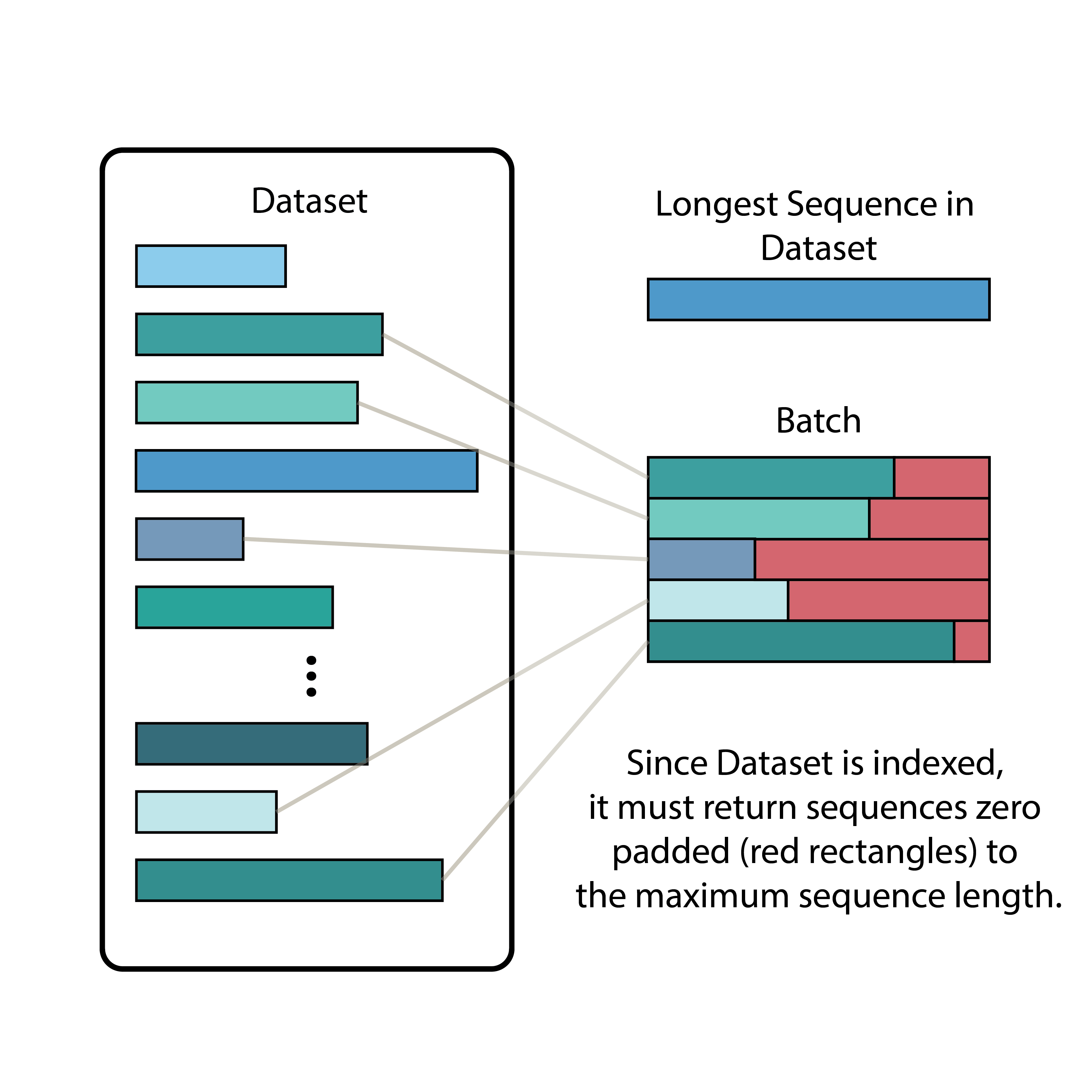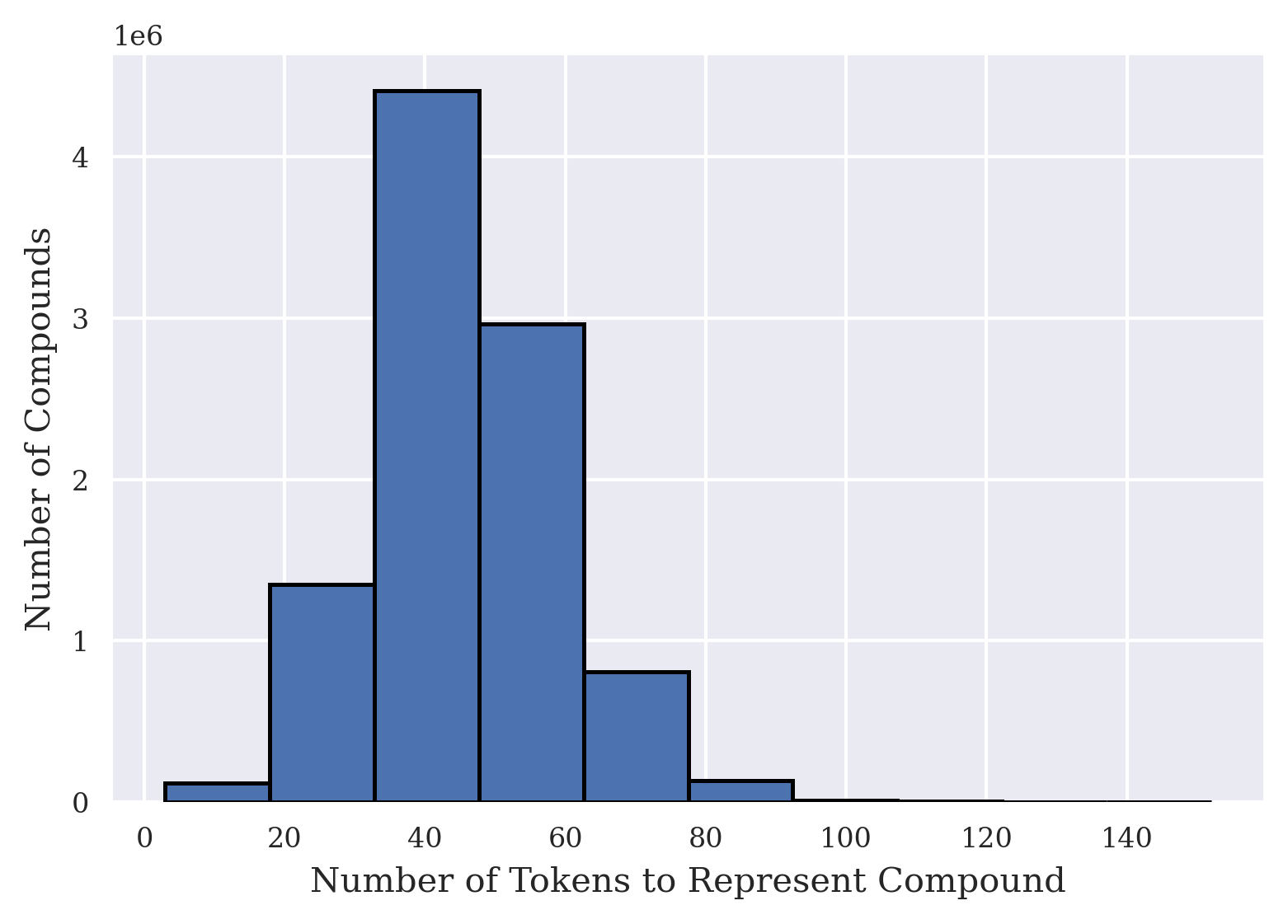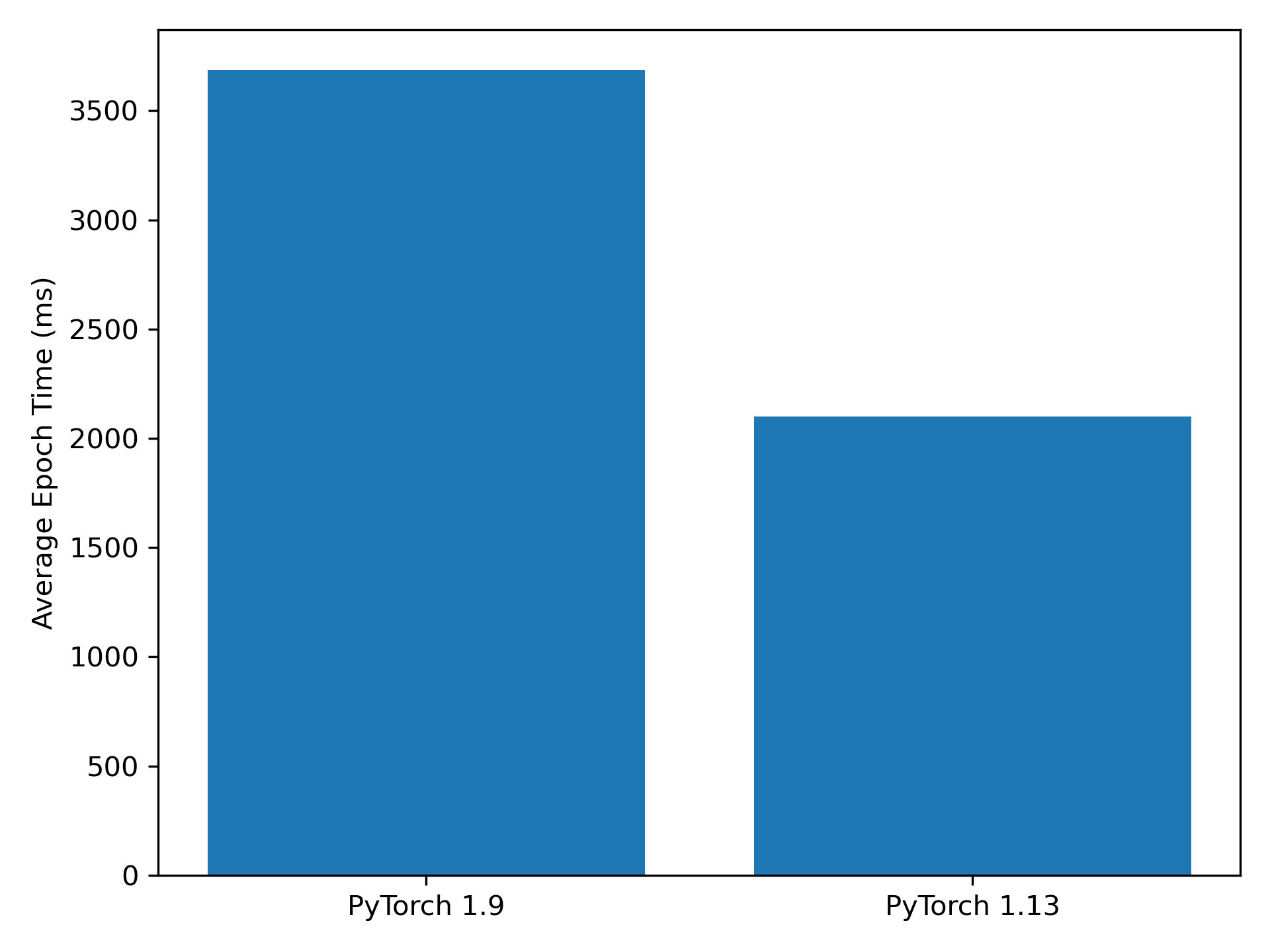
I recently updated the version of PyTorch for one of my development environments at work and came across a runtime error on one of my main model training scripts. The issue was a tensor dimension mismatch at the output of the BERT model the script is training. It took me a couple of minutes to figure out what was causing the issue. It turns out that the newest versions of PyTorch will dynamically size the batch of data going into a Transformer model based on the zero padding mask that is included.
While initially finding this breaking change to be quite annoying, I realized that this feature could potentially offer a dramatic speedup in training by reducing unnecessary computations on the zero padded elements. Since the PyTorch Dataset is indexed, you normally pad sequential data to some maximum length dictated by the maximum sequence length in the dataset. This allows the DataLoader to create a batch by concatenating multiple indexed samples together. This is shown in the illustration below.

While this makes the logic of the Dataset and DataLoader simple, it can result in batches with extra zero padding that is not necessary. This extra zero padding then results in extra computation that is ultimately discarded and wasted. The new versions of PyTorch detect this extra padding in a batch as it is passed to a Transformer model, and does not perform the extra compute on the zero padding, saving additional compute and improving processing speeds.
I was curious what the exact speedup of my model would be with this change so I decided to write up a simple benchmark. My model is trained on the ZINC 15 dataset which has some longer sequences but the median sequence length is much shorter than the maximum. The distribution on the lengths of the ZINC 15 sequences are shown in the image below.

I sub-sampled the full dataset to make a smaller version for the benchmark. I then ran the forward pass of the model (using GPU acceleration) in batches and timed how long an entire epoch took. I ran this trial 100 times and took the average execution time. I repeated this benchmark for PyTorch 1.9 and PyTorch 1.13. The results of the benchmark are shown below.

It can be seen that simply by switching versions of PyTorch, you can get a significant speedup with your Transformer models depending on the distribution of the sequence lengths in your dataset. Yes, you could implement this feature in older versions of PyTorch yourself too, but it is nice to have handled automatically. I feel silly that I didn’t think to implement this myself previously but I am not normally tasked with model optimization and the model training times were already reasonable. Hopefully this helps someone else out or finds the results interesting for the ZINC 15 dataset.